Fitbit Sense Vs Versa 3: A Practical Comparison
Fitbit Sense vs Versa 3: A Comparison
The Fitbit Sense and Fitbit Versa 3 are advanced fitness smartwatches designed to cater to diverse health and wellness needs. Positioned as a premium health-centric device, the Fitbit Sense boasts cutting-edge features. Its EDA sensor monitors stress levels, and the addition of a skin temperature sensor enhances health tracking. Notably, the Sense stands out with its electrocardiogram (ECG) app, enabling real-time ECG readings for comprehensive heart health assessment. The SpO2 monitoring feature broadens its health-tracking capabilities, offering insights into respiratory health. With built-in GPS, the Sense ensures precise outdoor activity tracking independently.
The Fitbit Versa 3, on the other hand, sits as an adaptable smartwatch with an emphasis on health and ease of use. While it may lack some of the specialized health sensors found in the Sense, the Versa 3 still delivers robust fitness tracking capabilities. Its features include built-in GPS for accurate exercise tracking, heart rate monitoring, sleep tracking, and support for various workout modes. The Versa 3 offers a more lightweight and sleek design, catering to users who prioritize a balance between fitness functionality and everyday wearability. Both the Fitbit Sense and Versa 3 exemplify Fitbit’s commitment to providing comprehensive health and fitness solutions, albeit with different emphases on advanced health features versus overall versatility and convenience.

Fitbit Sense Vs Versa 3: Design and construction quality
Fitbit Sense Vs Versa 3: Both the Sense from Fitbit and Versa 3 feature an elegant, modern design vocabulary that unifies them into attractive and versatile devices that can be used for a variety of purposes. Made from excellent components, these gadgets have a sturdy and long-lasting design.
Featuring a case made of stainless steel and an unusual sensing array on the rear for enhanced health tracking, the Fitbit Sense has a bit more sophisticated look. Its 1.58-centimeter AMOLED display has a subtle curve that adds to its sophisticated appearance.
The Versa 3 has a squarer form than the Sense, but it still features an aluminum shell and high-quality craftsmanship. It keeps its fashionable and adaptable look, making it appropriate for daily wear as well as exercise activities.
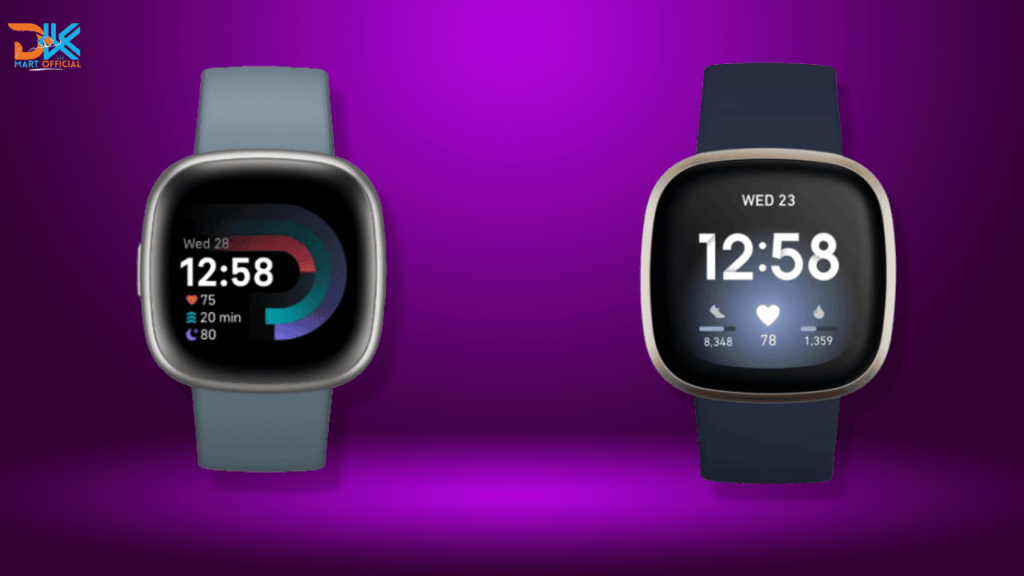
Fitbit Sense Vs Versa 3: Display
Fitbit Sense Vs Versa 3: The Fitbit Sense and Versa 3 both feature vibrant and crisp AMOLED displays, providing users with a visually appealing interface for tracking their health and fitness metrics. The Sense boasts a slightly larger and more rounded display, measuring 1.58 inches, compared to the Versa 3’s 1.58-inch squared-off screen. Both devices offer responsive touchscreens, making navigation and interaction seamless.
Moreover, these smartwatches share a high resolution of 336 x 336 pixels, ensuring clarity in data presentation and enhancing the overall user experience. The always-on display option on both models adds convenience by allowing users to check the time and their stats at a glance without needing to tap the screen. Overall, whether you opt for the Fitbit Sense or Versa 3, you can expect an immersive and user-friendly display that enhances your fitness tracking and smartwatch experience.
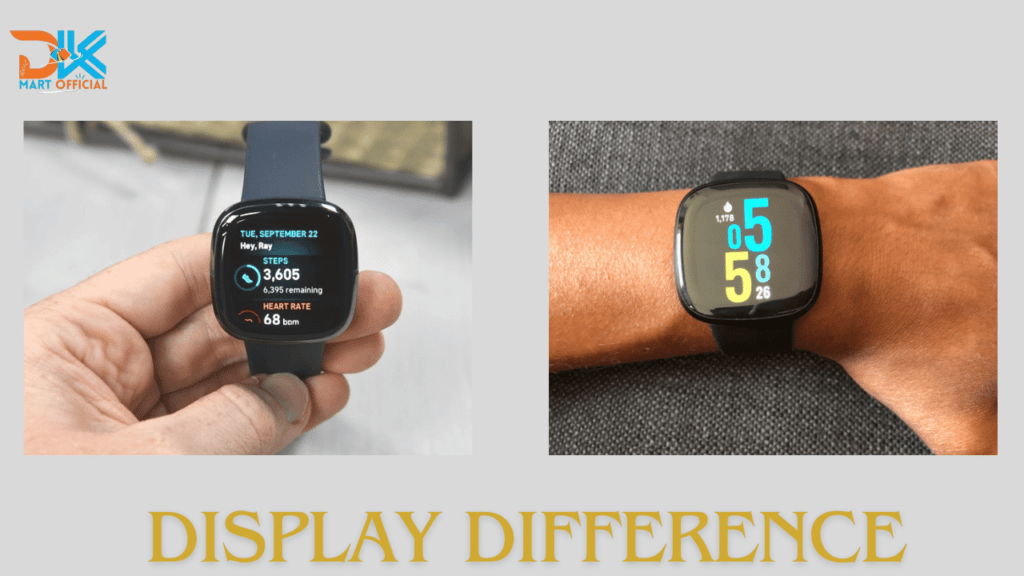
Fitbit Sense Vs Versa 3: Tracking Your Health and Fitness
Fitbit Sense Vs Versa 3: The Fitbit Sense and Versa 3 stand out as formidable health and fitness companions, each bringing unique strengths to the table. The Fitbit Sense elevates health tracking with cutting-edge stress management tools, featuring an EDA sensor for skin conductance measurement and an ECG app for atrial fibrillation detection. The inclusion of a skin temperature sensor adds a proactive dimension, aiding in the early detection of potential health changes.
In contrast, the Versa 3 focuses on delivering a streamlined fitness experience. With over 20 goal-based exercise modes and on-screen workouts, it caters to a variety of fitness preferences. The Active Zone Minutes feature enhances workout effectiveness by measuring time spent in specific heart rate zones, providing a holistic approach to fitness tracking. Each device, while sharing common features, brings its own distinctive elements to meet diverse health and fitness needs.
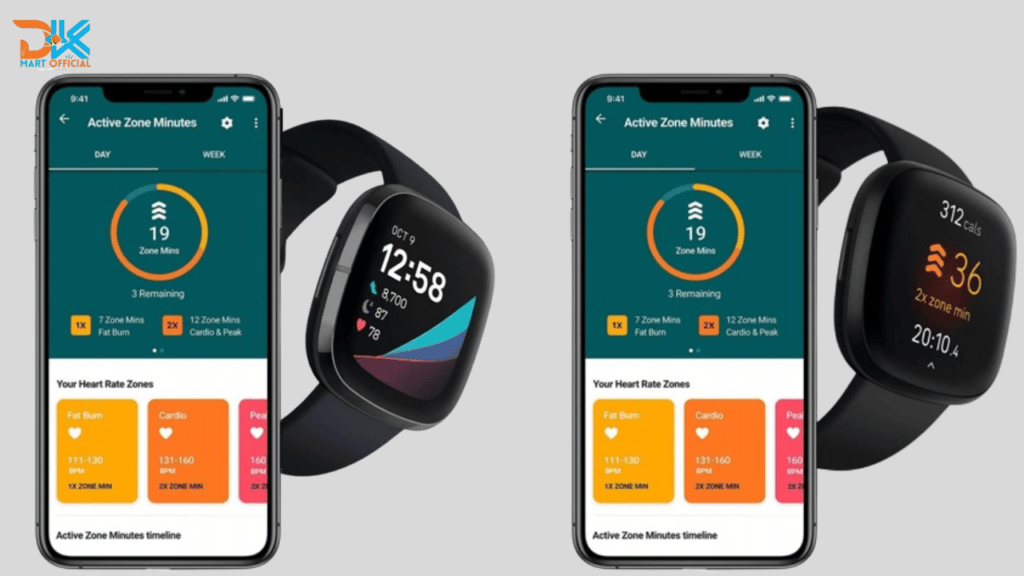
Fitbit Sense Vs Versa 3: Life of the Batteries
Fitbit Sense Vs Versa 3: When the battery life of the Fitbit Sense and Versa 3 is compared, both devices offer outstanding longevity, allowing users to stay connected and check their health without needing to recharge frequently.
A variety of usage and settings, the Fitbit Sense offers an average battery life of 6+ days on a single charge. Its energy efficiency can be attributed in part to its AMOLED display, which dynamically adjusts intensity based on environmental lighting conditions, thus conserving electrical power.
Similarly, the Versa 3 has an amazing battery life, generally lasting 6 days. The squared-off AMOLED display helps with energy conservation, and users can prolong battery life by altering settings like screen-on duration and turning off features like always-on display.
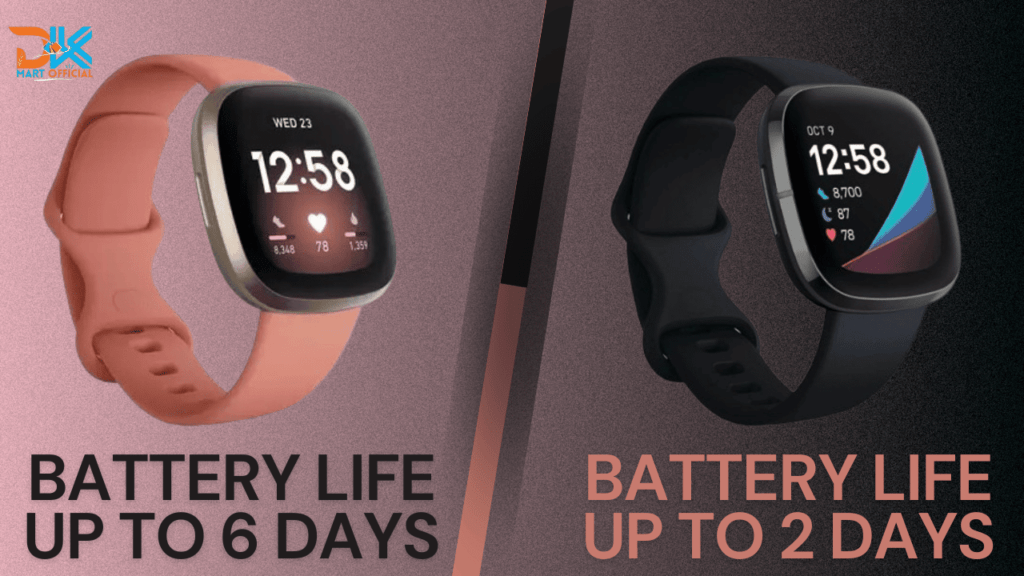
Fitbit Sense Vs Versa 3: Features of a Smartwatch
Both the Fitbit Sense and Versa 3 are smartwatches, as they include features other than health and fitness tracking. On both devices, you can receive smartphone notifications, control music playing, and even make purchases via Fitbit Pay. They are also compatible with speech assistants such as Amazon Alexa and Google Assistant, letting you control your smart home gadgets with your voice.
The Sense has an advantage in terms of onboard GPS, giving it a better option for tracking outdoor workouts without carrying your smartphone. It also provides a more complete music experience thanks to onboard music storage, whereas the Versa 3 relies on a music streaming app on your smartphone. The Sense is ideal for audiophiles and outdoor enthusiasts.
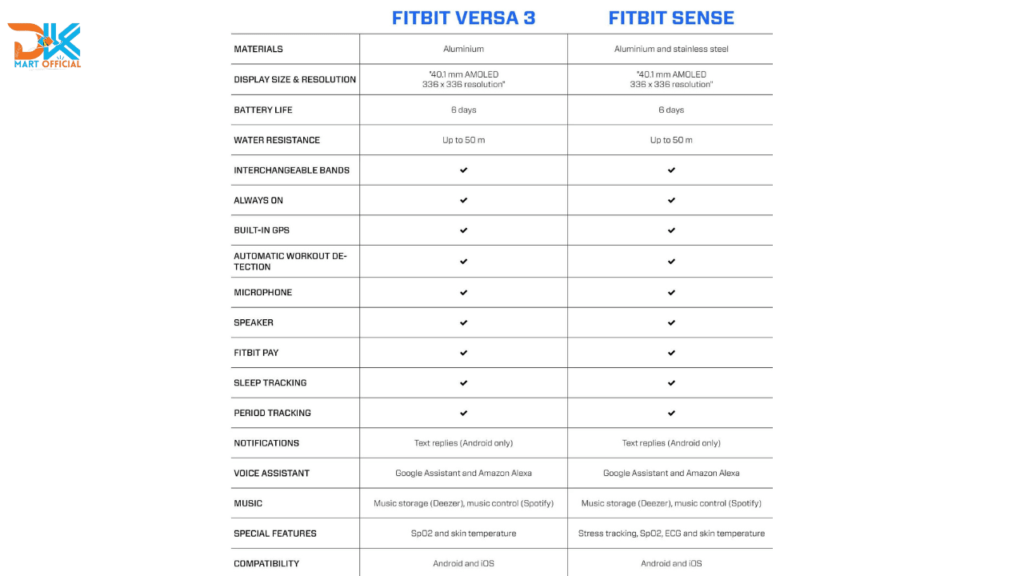
Fitbit Sense Vs Versa 3: Integration of Software and Apps
Both the Fitbit Sense or Versa 3 communicate with the Fitbit app, which offers a simple interface for tracking your health and fitness statistics. For added encouragement, the app allows you to establish goals, view historical data, and interact with a community of Fitbit users. You can also link your data with other health and fitness apps, such as MyFitnessPal, to help you monitor your overall health.
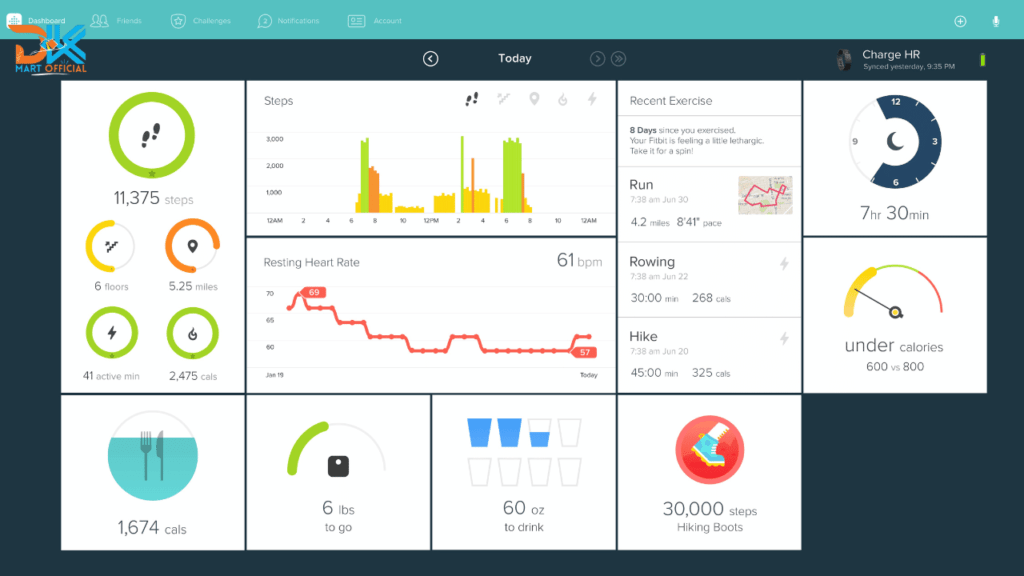
Fitbit Sense Vs Versa 3: Price and worth
When deciding between the Fitbit Sense and Versa 3, price is an important consideration. Because of its comprehensive health monitoring functions and quality style, the Sense is the more expensive alternative. If you value sophisticated health functions and don’t mind the additional price, the Sense is a terrific buy. The Versa 3, on the other hand, provides a fair blend of functionality and value, making it an appealing option for customers who want vital health and fitness tracking without breaking the bank.

The Difference in Screen Brightness Between Fitbit Sense and Versa 3
Both the Fitbit Sense and Versa 3 have high-quality AMOLED displays with colorful and sharp images. The screen brightness, however, is a significant difference between the two. When compared to the Versa 3, the Fitbit Sense has a slightly brighter display. This increased brightness is especially useful while using the smartphone in direct sunshine or other bright outside circumstances, as it improves visibility and ensures that on-screen content remains legible. While both smartphones have outstanding screen quality, the Sense’s slightly brighter display may make it a better choice for people who frequently indulge in outdoor activities or simply want more visibility in different lighting circumstances.
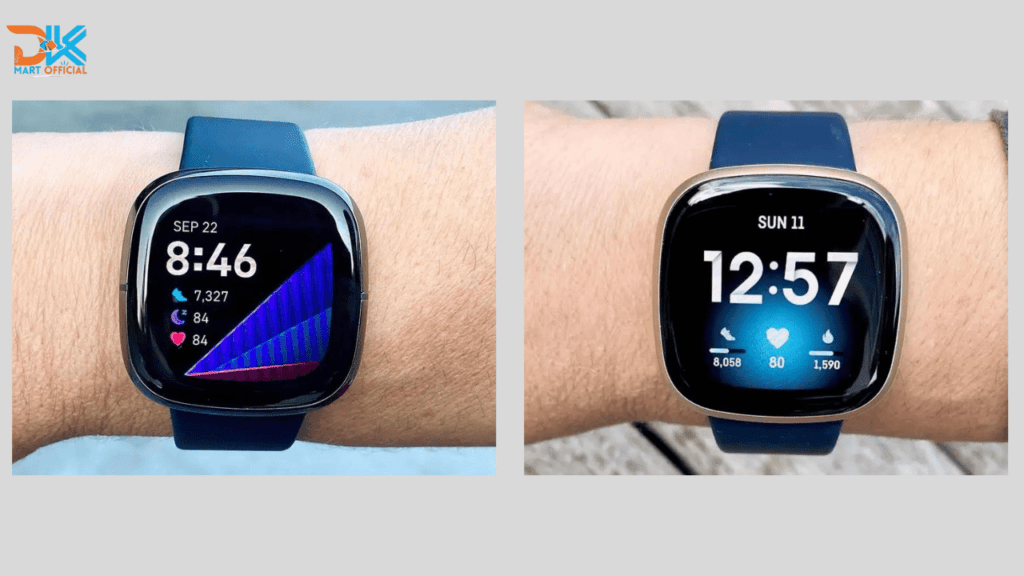
Fitbit Sense vs Versa 3: Workout Modes Showdown
Fitbit Sense Vs Versa 3: In addition to their extensive workout modes, both the Fitbit Sense and Versa 3 offer unique features that set them apart. The Fitbit Sense stands out with its advanced stress management tools, incorporating an EDA sensor for skin conductance measurement and an ECG app for atrial fibrillation detection. The introduction of a skin temperature sensor adds a proactive health monitoring aspect, distinguishing it as a holistic well-being companion.
On the other hand, the Versa 3 introduces convenience with built-in GPS, ensuring accurate real-time workout metrics without the need for a paired smartphone. This feature enhances the device’s autonomy and appeals to users who prefer the simplicity of a self-contained fitness tracker.
While both devices share a commitment to diverse workout tracking, these unique elements cater to specific health and fitness needs, providing users with options that align with their preferences and priorities.
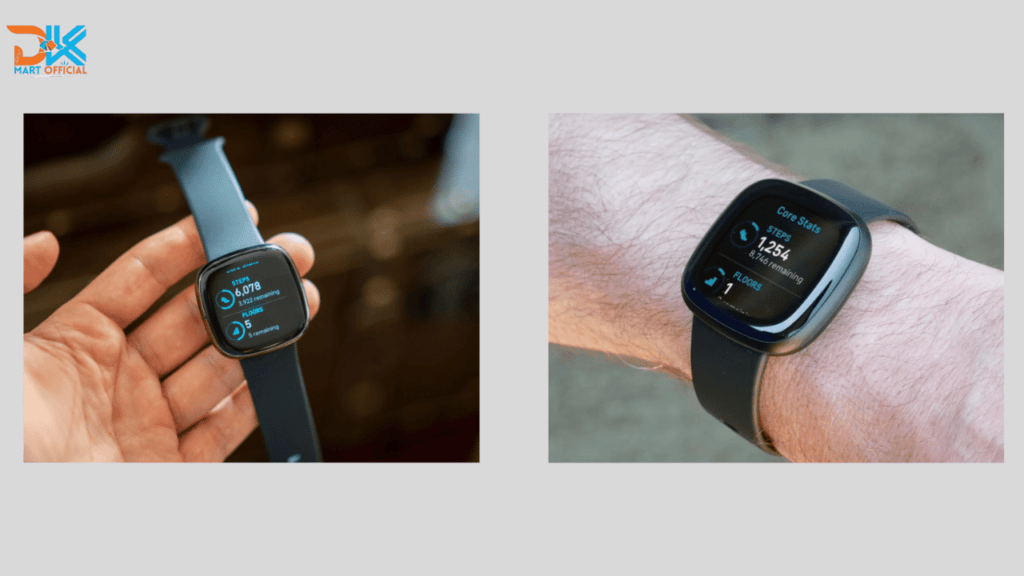
Fitbit Sense vs Versa 3: Comparing Stress Management
Fitbit Sense Vs Versa 3: Stress management is an important element of general well-being, and both the Fitbit Sense and Versa 3 provide functions to assist users in dealing with stress. The Fitbit Sense, on the other hand, takes the lead in this category. It has an Electrodermal Activity (EDA) sensor, which analyzes changes in the electrical conductivity of the skin, providing information about stress levels and permitting assisted breathing exercises. Furthermore, the Mindful Method mode for relaxation and meditation on the Sense provides a more holistic stress management experience.
While the Versa 3 does have stress tracking and guided breathing exercises, it does not include the EDA sensor or the specialist “Mindful Method” mode. The added stress management functions of the Sense make it a more valuable tool for people who want to go deeper into stress monitoring.
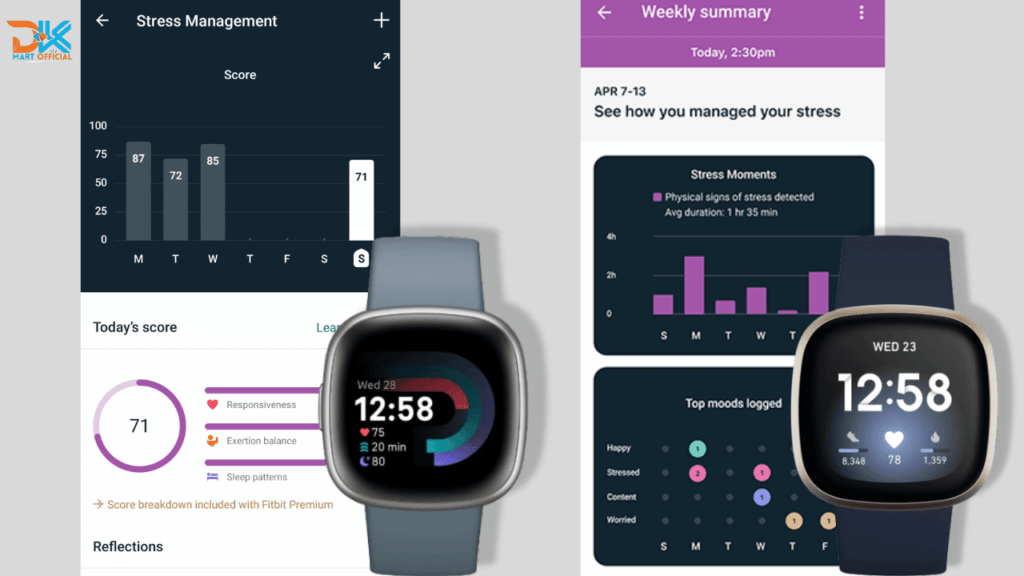
Fitbit Sense vs Versa 3: Colorful bands
Fitbit Sense Vs Versa 3: Customizable bands are available for both the Fitbit Sense and Fitbit Versa 3, with a range of vibrant options to fit personal tastes and styles. Fitbit offers a variety of band options so customers may customize their devices by switching between various colors, materials, and styles.
Because the bands on both models are interchangeable, users may easily switch them out depending on their activity, mood, or attire. Fitbit usually provides a range of official bands in different colors; users who desire additional alternatives can also choose from third-party options.
Whether you choose the Fitbit Sense or Versa 3, you’ll probably discover a wide variety of colorful bands to customize your fitness tracker and increase its usefulness and visual appeal.
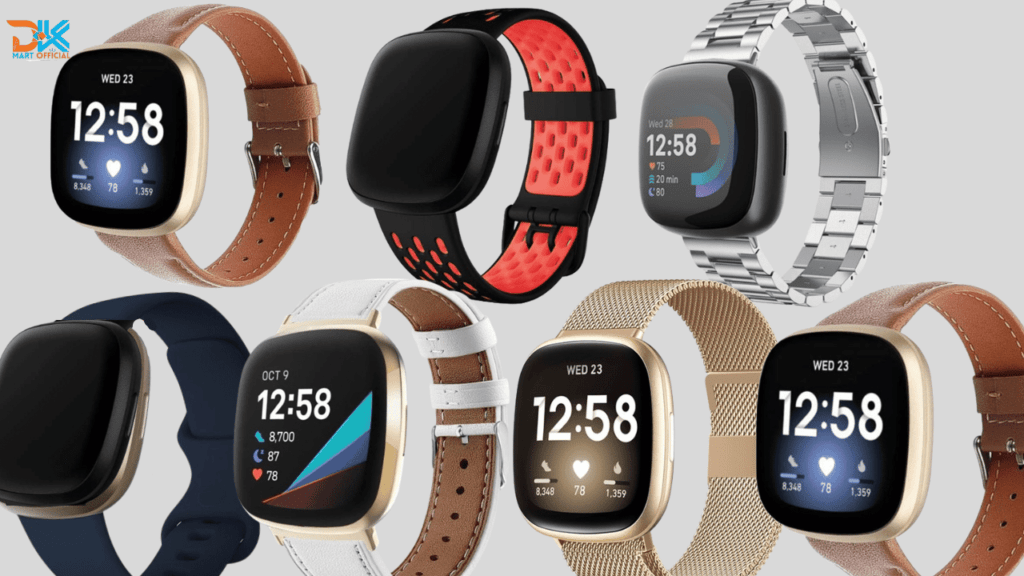
Fitbit Sense vs Versa 3: Which Model Offers More Feature?
The Fitbit Sense surpasses the Fitbit Versa 3 in functionality, offering an array of advanced features that elevate its health and wellness tracking capabilities:
Advanced Health Metrics: The Fitbit Sense introduces advanced health monitoring features such as an Electrodermal Activity (EDA) sensor for stress tracking, an Electrocardiogram (ECG) app for in-depth heart health assessment, and a dedicated skin temperature sensor, providing a more comprehensive health snapshot.
Stress Management: The Sense takes stress management to a higher level by offering tools like EDA scans and guided breathing sessions. These features empower users with effective tools to manage stress efficiently, contributing to overall well-being.
Temperature Tracking: With its dedicated skin temperature sensor, the Fitbit Sense can monitor changes in skin temperature. This capability goes beyond basic health tracking, offering valuable insights into overall health and potential variations.
On-Wrist Elevation: The Fitbit Sense includes an altimeter for on-wrist elevation tracking, a feature particularly beneficial for activities like hiking and exercises involving changes in elevation. This adds a practical dimension for users engaged in elevation-based workouts.
While both models share fundamental features like built-in GPS, sleep monitoring, and various activity modes, the Fitbit Sense stands out as the superior choice for those seeking a more advanced and comprehensive health and wellness tracking experience.
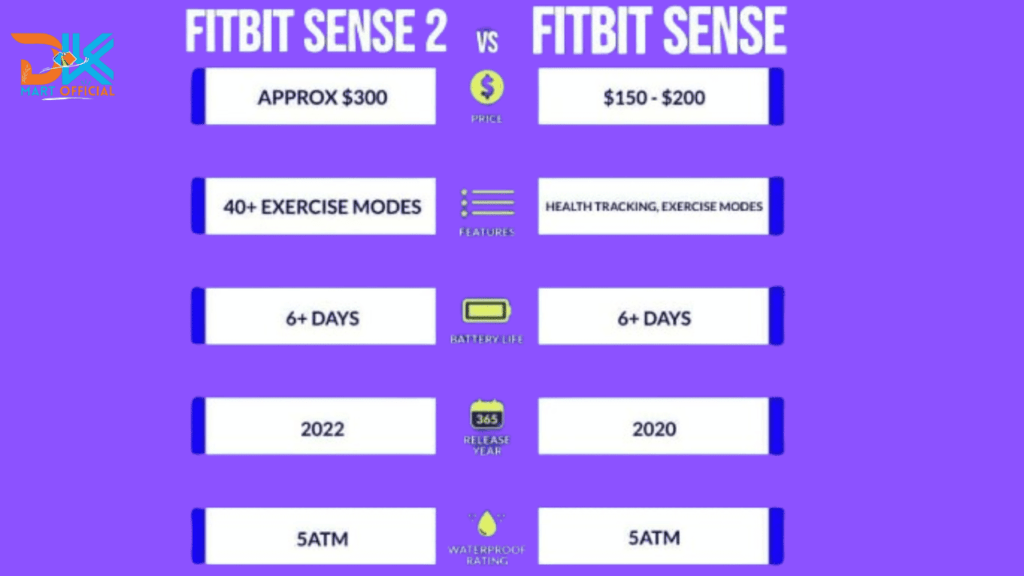
Fitbit Sense vs Versa 3: which is lighter?
The Fitbit Versa 3 is the lighter of the two devices in terms of weight. The aluminum case on the Versa 3 contributes to its lightweight design. This is in contrast to the Fitbit Sense, which has a stainless steel case and is thus somewhat heavier. While the weight difference may not be significant, it might be an important consideration for people who prefer a lighter and more comfortable feel on their wrists, especially during lengthy wear and vigorous activity. If you like a lightweight device, the Versa 3 may be the better option, whilst the Sense has a more quality design but is slightly heavier.
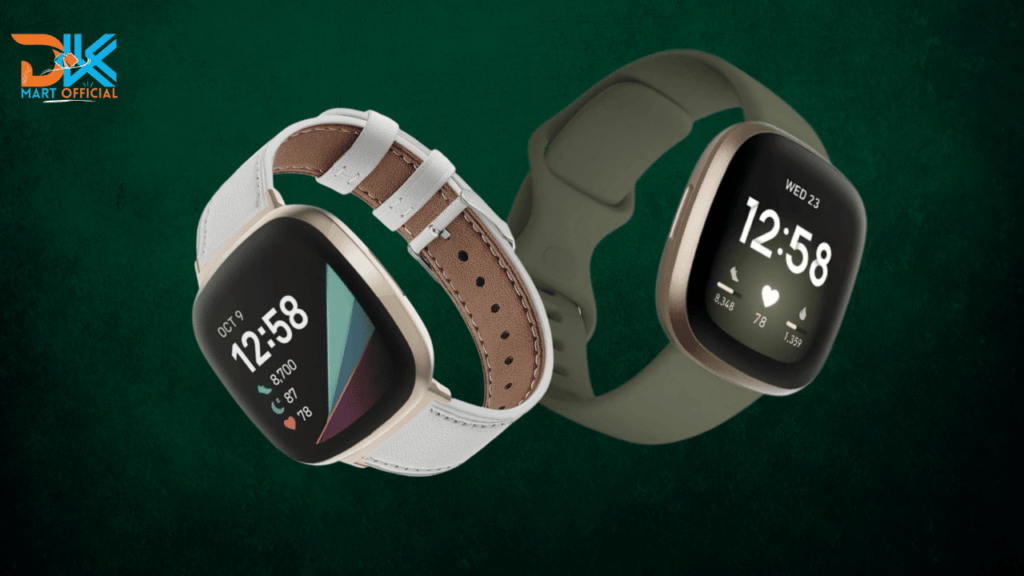
Frequently Asked Questions
Here’s an updated table with different descriptions for the design and build of the Fitbit Sense and Versa 3:
| Aspect | Fitbit Sense | Fitbit Versa 3 |
|---|---|---|
| Pros | ||
| Health Monitoring | – Advanced health sensors | – Solid health tracking capabilities |
| – ECG and skin temperature sensors | – Suitable for basic health needs | |
| Design and Build | – Premium stainless steel construction | – Lightweight and durable aluminum build |
| Screen Brightness | – Slightly brighter AMOLED display | – Good display quality |
| Workout Modes | – Additional workout modes | – Essential workout modes |
| Stress Management | – EDA sensor for stress tracking | – Stress tracking and breathing exercises |
| – Special “Mindful Method” mode | ||
| Music | – Onboard music storage | – Music control through smartphone |
| GPS | – Built-in GPS for outdoor activities | – Relies on connected smartphone |
| Unique Features | – Skin temperature sensor for wellness | – Built-in microphone for voice commands |
| – ECG app for heart health | – Unique infinity band design | |
| – High and low heart rate notifications | – Can receive calls and respond to texts | |
| – SpO2 monitoring for blood oxygen levels | – Vibrant AMOLED display |
Conclusion
In conclusion, the Fitbit Sense and Versa 3 are both fantastic fitness trackers and smartwatches with a lot to offer. Your final decision should be based on your requirements and budget. With advanced health monitoring features, a premium design, and additional smartwatch capabilities, the Sense is the more comprehensive option. The Versa 3, on the other hand, is a more affordable option that nevertheless offers a great health and fitness monitoring experience as well as basic smartwatch functions.
Consider your priorities before making a decision. If you’re serious about your health and prepared to spend extra money, the Sense is the way to go. However, if you’re searching for a dependable, low-cost choice, the Versa 3 will suffice.

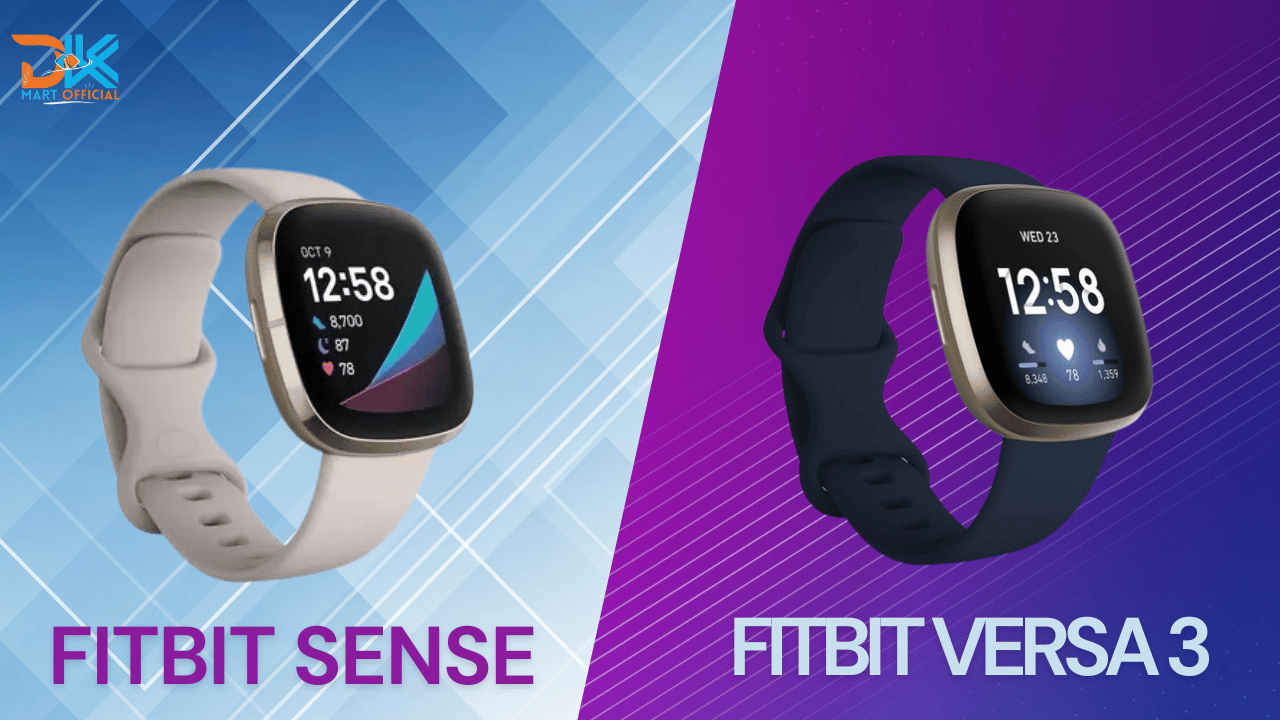
Can you be more specific about the content of your article? After reading it, I still have some doubts. Hope you can help me.